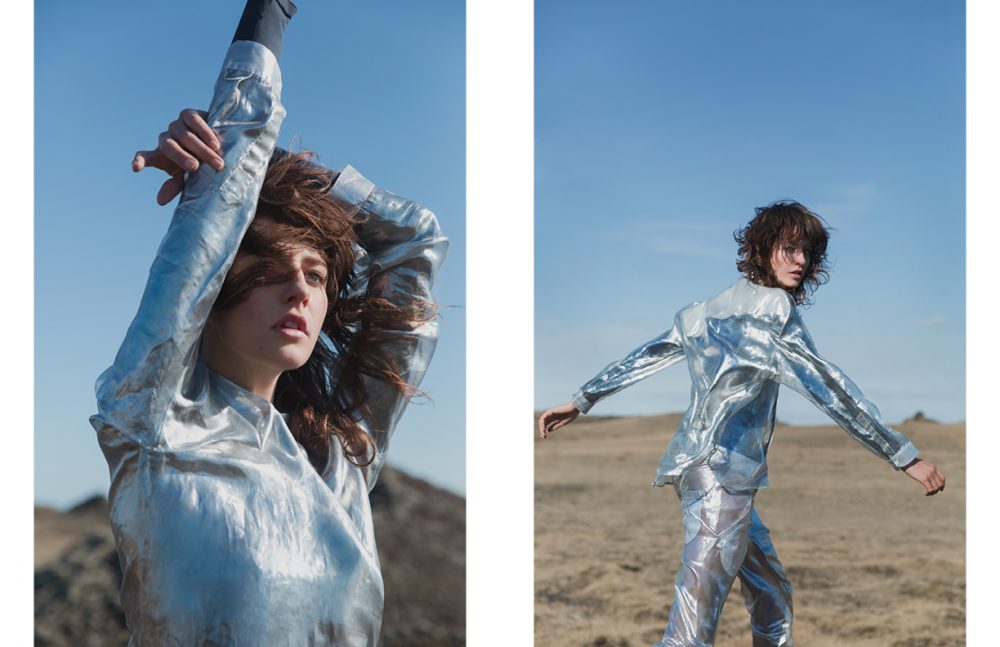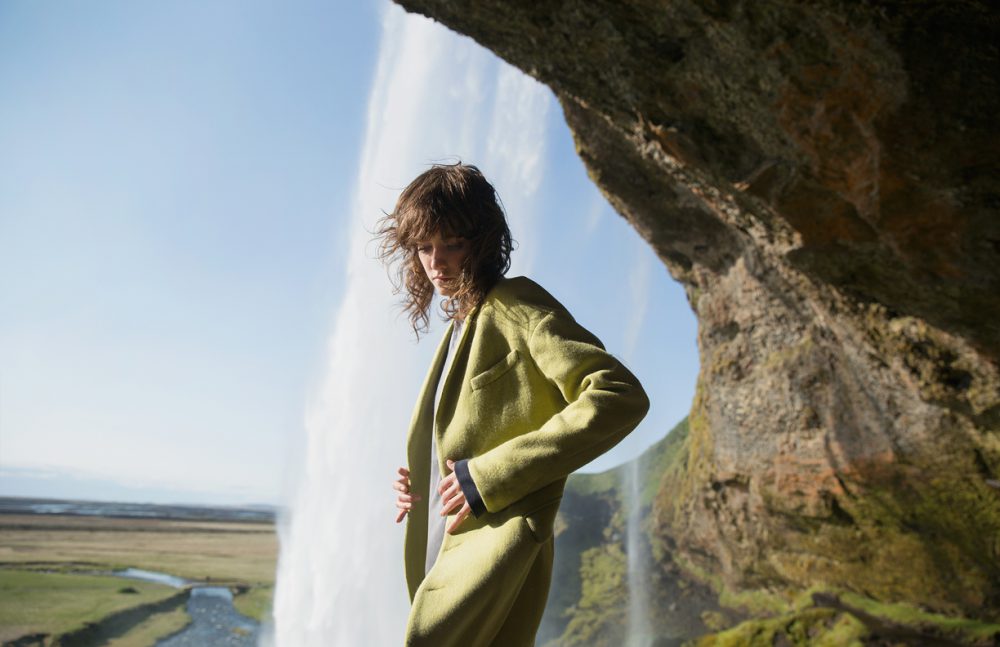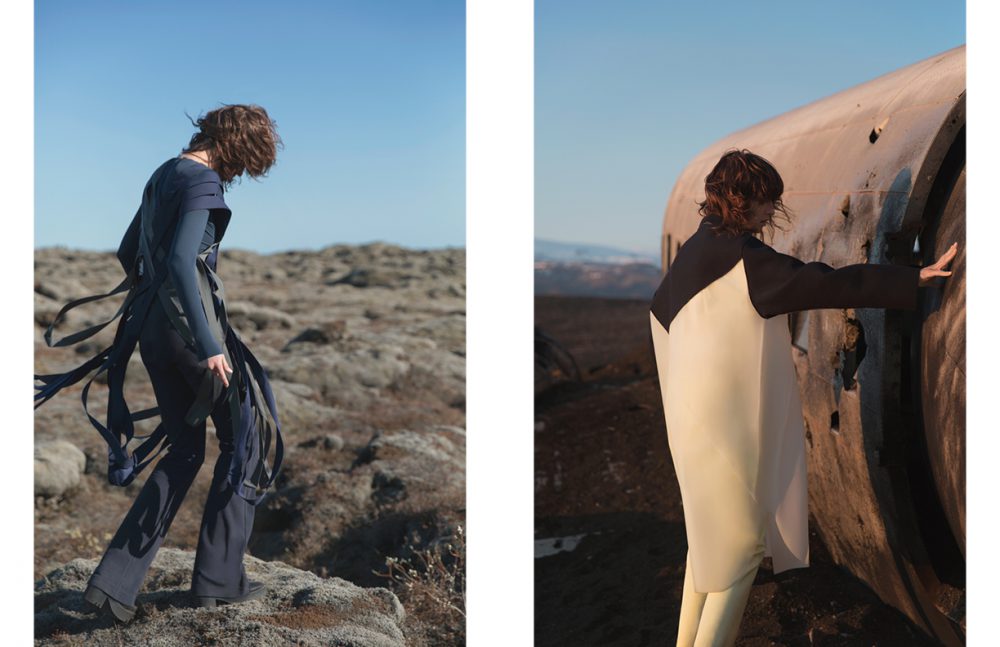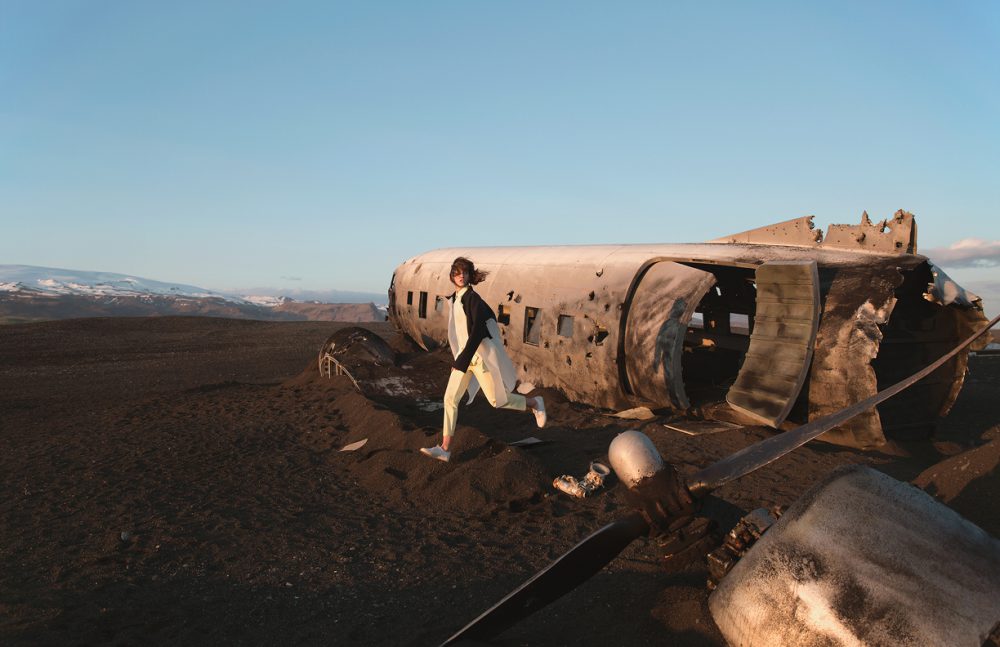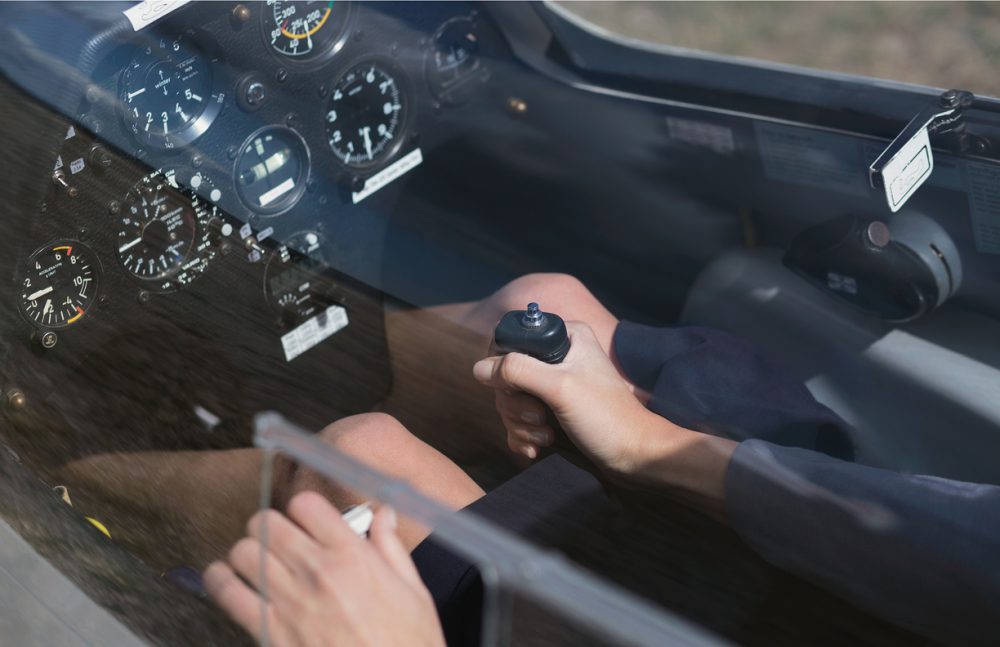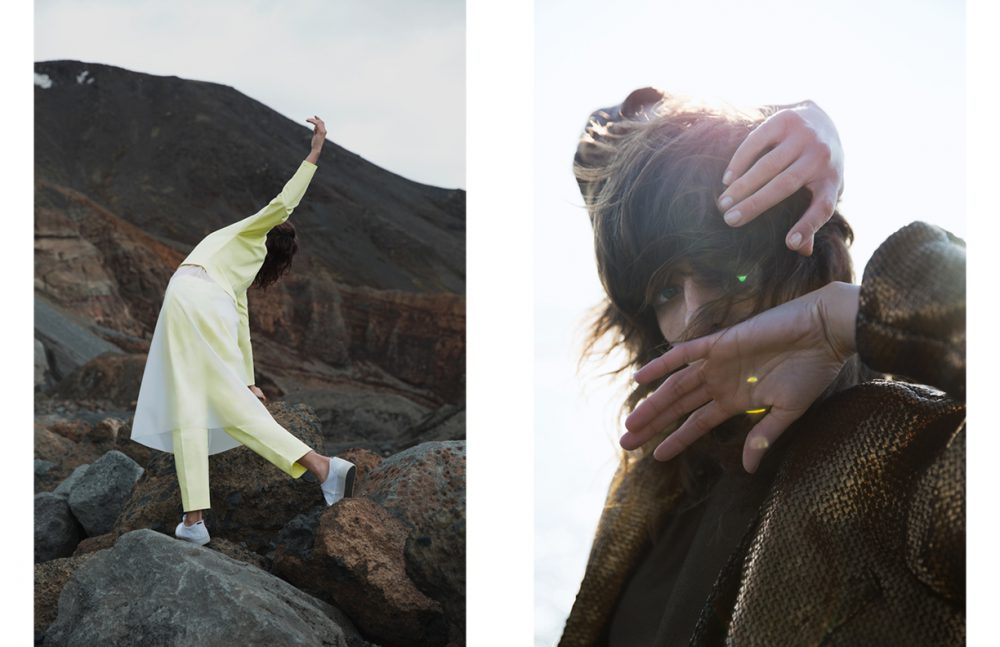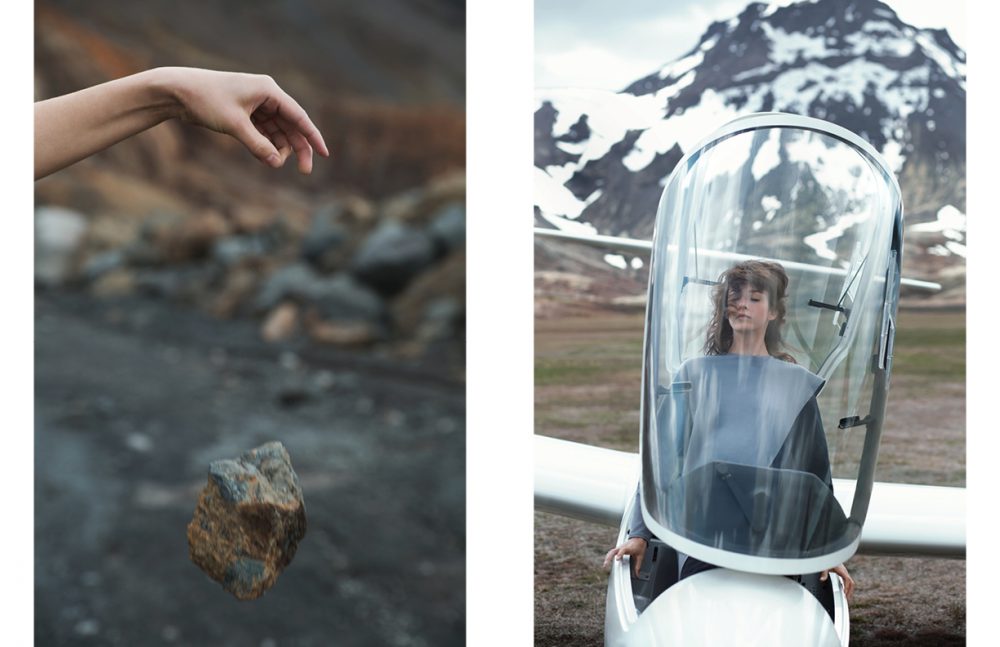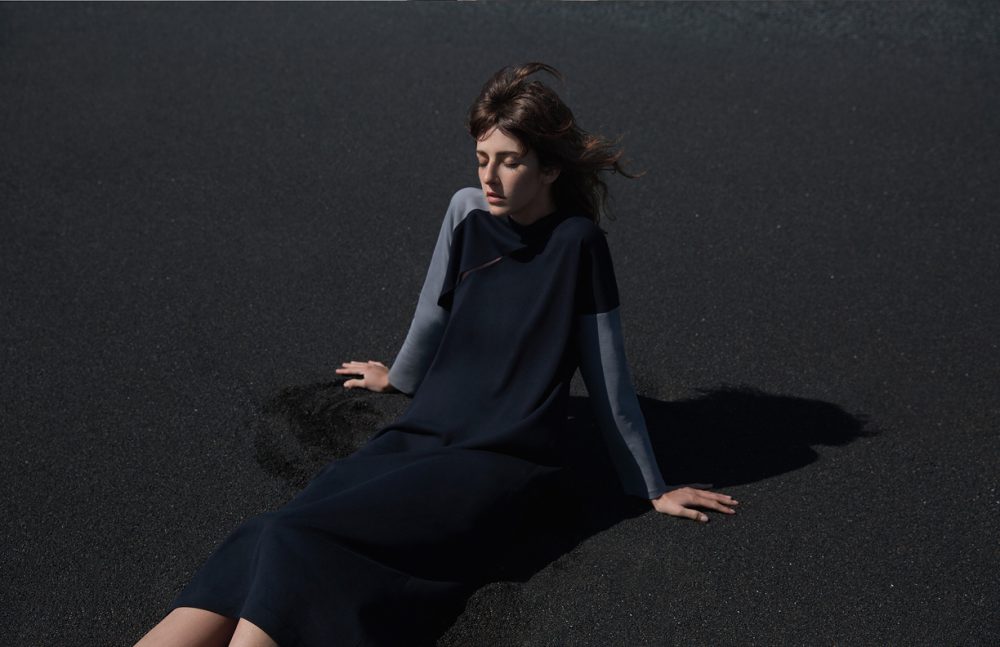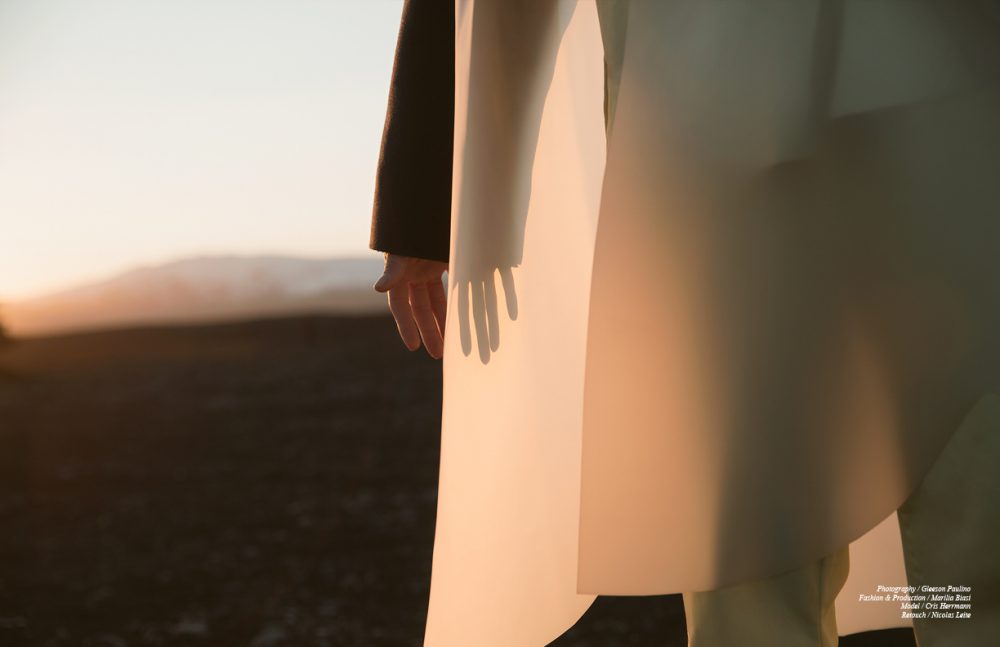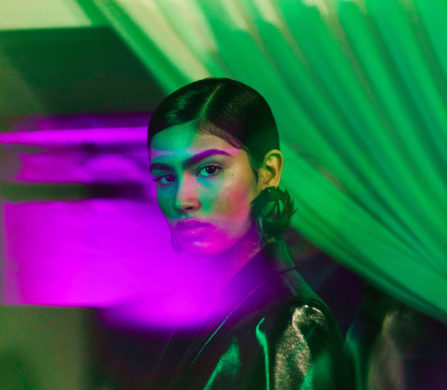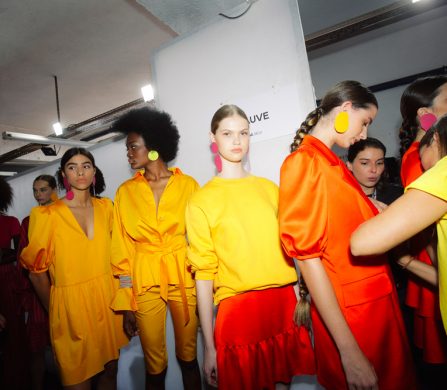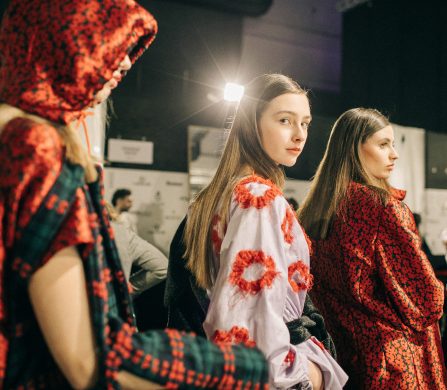Revolutionising the processes of fashion, AWAYTOMARS opens up the creative process to the digital world, democratizing access to success. Aspiring talents from the globe come together as in community to co-create designs, thanks to one tool: the Internet. The first user-created fashion brand takes its cue from social media and its ramifications of engagement and exchange. Built on a founding base of 446 users from 67 countries who came together to make use of the co-creation tool, AWAYTOMARS now counts more than 2000 users.
Its founding principle is that of a sharing economy: AWAYTOMARS is a space where contributors can submit sketches of their ideas. Designers put up images of the collection they are working on and users can contribute to, advise on and get involved in the design process. Next, each piece is promoted through crowdfunding – technical experts provide the necessary knowledge to create prototypes, oversees the production and finally hosts the sales. Backers have the privilege of funding by pre-ordering the pieces at wholesale prices. The involvement of AWAYTOMARS’ industry experts means that creativity comes to reality – as they provide their knowledge of and techniques and by calling on their relationships with producers in Europe. Ultimately, AWAYTOMARS signals a shift in the fashion industry: one where creativity has finally met its just deserts – a collaborative space, where design is democratized, and funds are shared. Schön! sits down with founder Alfredo Orobio to discuss opening up digital economy to a shared initiative.
Where did the initial idea for AWAYTOMARS come from?
AWAYTOMARS was the result of my studies at university where I spent almost a year mapping how people share creative information on social media. I discovered that a lot of people with great ideas for fashion products already shared them on specific forums. The most surprising result of my research was seeing that not only were people sharing their ideas, but other people were volunteering suggestions to improve the designs. I realised that all this information was being lost because of the lack of opportunities to break into the industry. So we had the idea of building a place where people could share ideas, provide feedback to improve them, create prototypes and finally sell the products, all in a single place. We founded AWAYTOMARS last summer and since then we have grown to a community of 2000 active users.
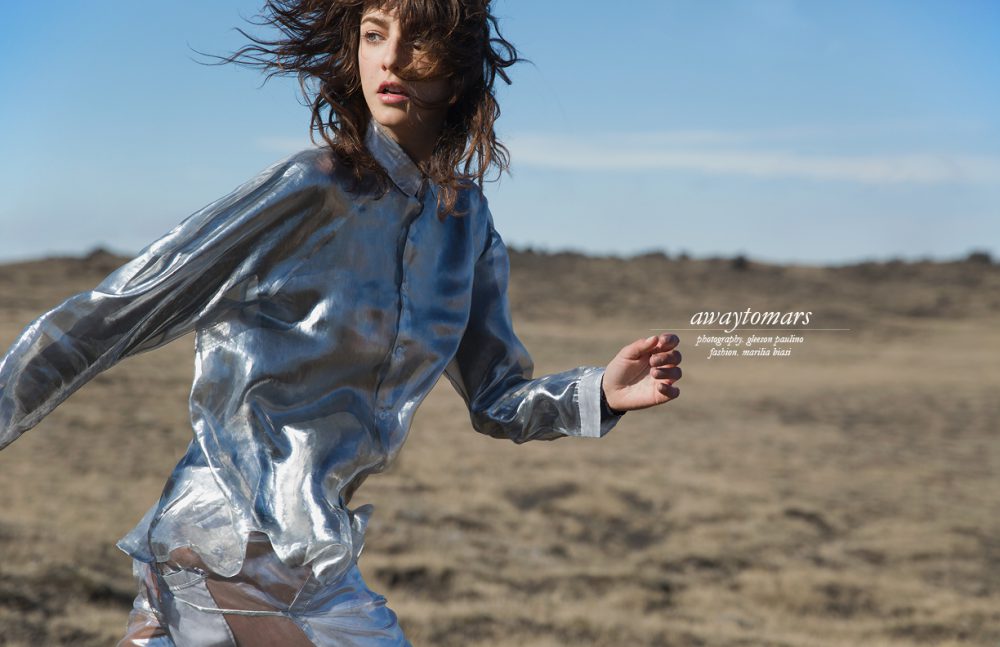
All Clothing / AWAYTOMARS
Do you think design can be democratic? Is there power in collectivity, collaboration?
I think IKEA makes design democratic in that it provides affordable, well thought out pieces available to most homes. But what we are doing is making the actual process of design democratic. We don’t want to be a fast fashion brand. One of our principal values as a company is to make sure that we know exactly what happens at every stage of our supply chain. Before producing any item, we have a deep look at the suppliers and manufacturers to make sure they are working to high standards, both ethically and in terms of quality. That’s one reason why we took time to build our network of suppliers. We offer a product that is produced by aspiring and established designers who are being paid fairly and in proportion to the success of their ideas. In this way we’re not just looking to disrupt the design process, but the entire production chain from sketch to sale.
Our main objective as a brand is to make the design process accessible to all, allowing any person from any background to create. We strongly believe that this is the future for all the creative industries. We are moving from a model in which a brand’s creative director takes all the credit to one in which the credit belongs to the collective. There are plenty of examples from other industries of using ideas generated by the public to find solutions. We are pioneering this approach in fashion, mixing people from different cultures in a place where the focus is the power of ideas we achieve when we open the creation and development to all. There is no one better placed than users to say what works or doesn’t work in terms of clothing design.
When you receive so many various contributions, how do you select or refine the design process?
When someone uploads an idea to AWAYTOMARS it goes to a co-creation board where anyone can vote and contribute suggestions. We have developed an algorithm on the platform that maps each interaction an idea had during the co-creation campaign. Using this we are able to identify the ideas with most interactions and choose the ones we believe have the most potential. After this stage we reach out to the selected designers to discuss how we can use all the feedback collected to improve the idea. We strive to make sure the entire process is transparent and user-driven.
Who are the people who contribute? Do contributors all come from a traditional fashion background?
The beautiful thing about AWAYTOMARS is that we are able to mix people from diverse cultural backgrounds. We are building a very exciting network including people already working in the industry behind big names such as Acne Studios, COS and Burberry. At the other end of the spectrum, we have people who are experiencing the industry for the first time, including an A level student from Norwich whose design featured in our March show. We want to give opportunities to everyone, from the designer working for a big name who doesn’t get any of the credit to the user that has never designed before but has a great idea for a product.
How do you curate harmony in a collective design? Is the forward slash the signature mark that brings pieces together?
The forward slash is our brand identity. It is something that links every piece in the collection. After two years’ strategising we realised that it only takes a simple thing like a pattern cut to make even a simple T-shirt distinctive.
Why do you think the traditional sales model of the fashion industry needs rethinking? Where does AWAYTOMARS fit in?
Fashion hasn’t yet been impacted by technology to the extent that other industries have. Yes we’ve seen an explosion of online multi brands in the last five years, but the whole concept is a replica of the offline model which doesn’t make sense anymore. There are a lot of costs involved in running a bricks and mortar shop; but when you move that business online you slash the outlay, so it doesn’t make sense that these online companies are working with traditional wholesale margins. The traditional model is impractical for any new designers that can’t meet high minimum orders or haven’t developed reliable cash-flow. It’s a model that is only beneficial for the wholesaler and for big brands that can work with small margins. We need to re-think the role of multi brand shops in a society that can access shops freely online. What we want to do with AWAYTOMARS is improve the roles of both the designer and the customer in the chain, offering them opportunities to purchase clothes at the same time as wholesalers with the same favourable conditions.
AWAYTOMARS effectively reverses the sales process – notably through crowdfunding and pre-sales – what is your aim with this? Do you feel like you need to prioritise the creatives in the industry?
We not only want to prioritise the creatives but also customers as a whole. I’ve been working in the industry for a while now, and I really cannot see why we need a middle man in the sales process. I can understand the model for a society without access to information, but why would you pay two or three times more for a item just to buy it in a retail space? I don’t think the bricks and mortar model is dead, but it needs rethinking. I cannot see the current model for department stores being successful in the near future.
In your collaborative process, how do you distribute the profits and sales?
We share the profits not just with the designer who submitted the idea but with everyone who contributed to improve the idea. We distribute 30% of our profits to the community: 20% goes to the designer and a further 10% to the users that helped to improve the design. We believe that with this model we not only have a designer but a true brand ambassador, and as it is all linked to sales, the more we sell the more the designer and the community will receive.
Do you think AWAYTOMARS has the potential to evolve into a mass-market model?
That’s our goal as a company. When we present the model to people in the industry we always get the question of why we are not patenting this idea. My answer is always the same: I want other companies to copy this model. I cannot see our industry surviving in a sustainable way without opening up the chain.
What are your ambitions for AWAYTOMARS’ future?
We have users from 67 countries now. We want to expand the idea to more countries and grow the diversity of our community. We also want to make the co-creation tools easier to use and bring the co-design process into real time. We are working to develop a tool that will allow people to design using virtual reality and have a 3D view of the design and fabrics, all the while exchanging knowledge with others in real time. We want to be to fashion what Uber is to mobility.
For up-to-date news on AWAYTOMARS, head to the social media channels below,
Follow AWAYTOMARS on Instagram.
Like AWAYTOMARS on Facebook.
This Schön! online exclusive has been produced by
Photography / Gleeson Paulino
Fashion & Production / Marilia Biasi
Model / Cris Herrmann @ Next
Retouch / Nicolas Leite












